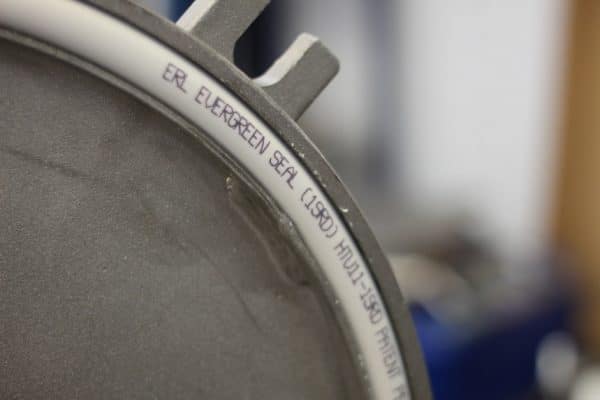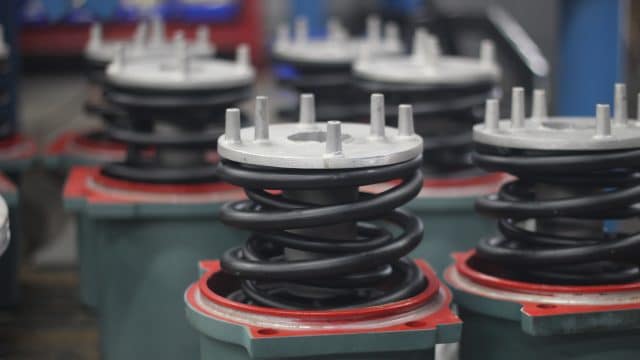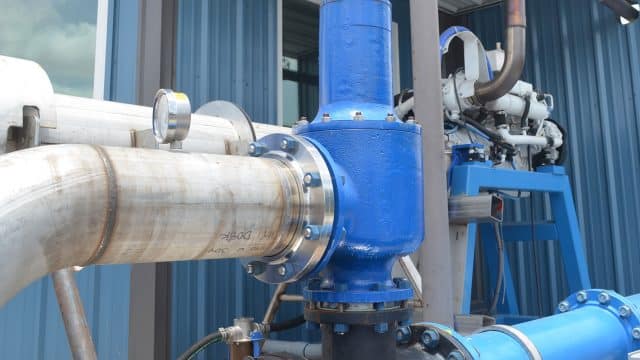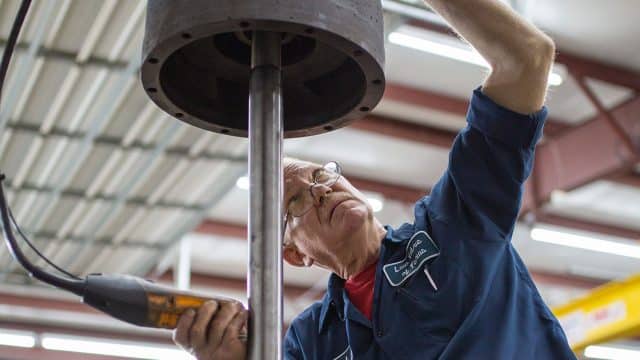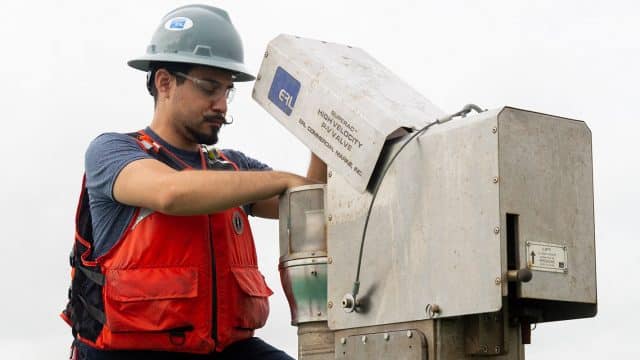More and more ERL Inc. is hearing from our customers about issues related to liquid cargo vapor emissions from the Hatches on their tank barges. In many cases these operators are not allowed to discharge their cargo due to excess vapor emissions. Docks and terminals are now employing technology that allows for the detection of these emissions and if discovered when approaching the dock, the tank barge operator is turned away until the issue is resolved. Tank Barges with “watertight” hatches are now required to hold pressures of up to 3 PSI without emissions from deck side hatches on equipment that was not designed for that purpose. The current gasket technology most prevalently used is a Teflon Braided material that is porous and will allow pressure within the tank to bleed off at a significant rate. ERL was asked to review the current technology and if possible, look for or develop a solution that could lower those emissions. What we found was the current technology leaked at a significant rate regardless of if new or used and was minimally affected by overtightening the hatch. The leak rate was measured on average at 115.5 In3/minute at 3 PSI and 65oF with compressed air as the test gas. To put this into perspective, the Goodyear blimp has an envelope volume of 202,707 ft2 and the leakage of a single 30K Tank Barge could fill this volume more than 3 times if loaded with cargo for a year. ERL began looking at solutions that could seal the watertight hatches and was chemically compatible with the various liquid cargo’s operators push. After significant research and testing, ERL had its solution. The EverGreen Seal (pat. pend.). The EverGreen Seal is a direct replacement for the current braided Teflon gasket material currently employed and reduces hatch emissions by 90.6% and to use the above analogy would take almost 4 years to fill a single Goodyear Blimp. By significantly lowering the emissions rate from deck side hatches, operators will no longer experience the transfer issues where detection systems are currently in use and will become more important as more of these systems are deployed. Our industry has always strived to be good stewards of the environment and to protect the waterways where we operate, new technology and practices are important to the wellbeing of the planet and all that live on her.
04 May

